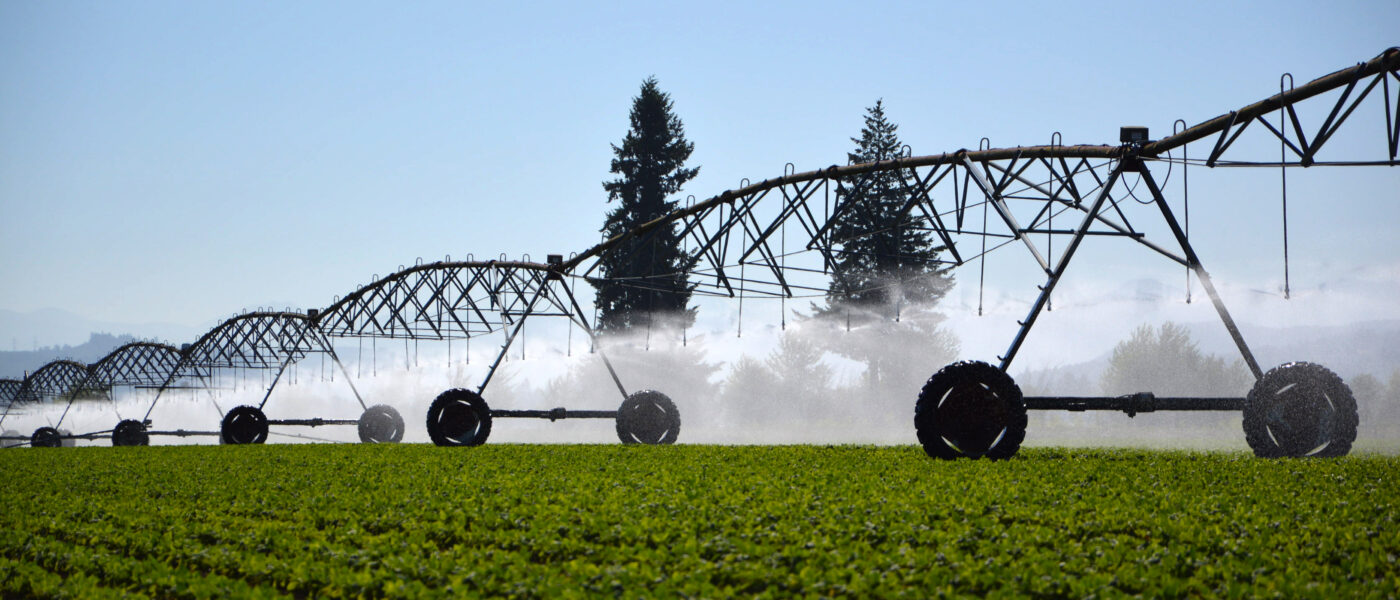Climate change is impacting water availability and precipitation patterns across the United States. Flooding, droughts and decreased reserves of fresh, clean water are all consequences of these changing patterns. As the United Nations notes, climate change is primarily a water crisis. But — like agriculture — water can fight climate change. Sustainable water management is crucial to building the resilience of farms, communities and ecosystems, and to reducing carbon emissions. Everyone has a role to play; actions at the individual, household and farm levels are all vital!
Climate Change and Water Availability in the Midwest and Great Plains
Average temperatures in the Midwest and Great Plains have become 1.5°F warmer over the last century and precipitation has increased, a trend that is expected to continue. In the future, scientists project heavier downpours during spring and winter months, accompanied by hotter, drier summers. These intense precipitation events lead to flood damage and strained drainage infrastructure, reducing clean water availability.
In the Great Plains, the Ogallala Aquifer is experiencing long-term declines and reduced recharge rates due to lower precipitation across the region. Heavy precipitation events do little to recharge aquifers, as they lead to runoff, not absorption.
Impact on Agriculture
Agriculture in the Great Plains is expected to rely more heavily on the aquifer as dry, hot conditions increase and surface water and reservoirs are reduced in capacity. While higher temperatures may boost yields in the near future, farmers can expect lower yields long term due to heat stress on crops and livestock, a shortening of corn’s reproductive development period, and increased pest and disease pressure. Large rain events and flooding can also impair the timing of spring planting or fall harvests, negatively affecting production.[1][2]
How Farmers Are Adapting to Changes in Water Availability
Farmers are at the forefront of climate change, experiencing new precipitation patterns and extreme weather events on a daily basis. They are finding ways to adapt by altering their growing practices and finding new ways to use water. Some of these mitigation strategies include:
Recycling Wastewater:
- Water generated on farms or wastewater treatment plants is treated and used for crop production. This practice reduces runoff and nutrient pollution of nearby water bodies and lowers the cost of water procurement.[3]
Improving efficiency of water use on farms:
- Upgrading to irrigation pipeline or drip irrigation systems instead of flood or overhead irrigation systems reduces evaporation and increases water use efficiency for plants, lowering a farm’s water usage.
- Upgrading above ground canal systems can make them better able to handle flood conditions in places like California.[4]
Adopting Conservation Practices:
- Improving soil health through the use of cover crops, rotational grazing and reduced tillage increase the land’s resilience in instances of both extremely wet and dry conditions.
- Permanently setting aside flood-prone areas and putting them under conservation easements.
- Planting grassed waterways and riparian buffers to prevent erosion and runoff by slowing the rate of runoff, holding soil in place and taking up water.[5]
Diverting floods and recharging aquifers:
- In regions of the country prone to cycles of excess precipitation and droughts, farmers are experimenting with intentionally flooding their fields during flood events and letting water recharge aquifers. Instead of letting water run off, farmers can direct it to areas with porous hydrology, where it can slowly drain and recharge aquifers.[6]
Reassessing water-intensive cropping systems:
- Shifting from water-intensive crops like alfalfa to a diversified, rotational system or a mix of forage crops.[7]
Policy Tools for Addressing Water Issues
- Incentivizing voluntary, compensated water transfers between water users, such as farmers and urban areas.[8]
- Improving the crop insurance program so a wider range of producers can withstand flood and drought events.
- Compensating farmers for taking flood-or drought-prone land out of production and for implementing conservation practices.
- Providing funding and technical assistance for farmers to install water-efficient infrastructure and practices or to shift away from water-intensive cropping systems.
- Funding for water conservation initiatives.
Water Pollution in Indiana
An important agricultural state, nearly 80% of Indiana’s land is farmed. As in other states, confined animal feeding operations (CAFOs) in Indiana pose risks to water resources: as of 2022, Indiana had the most miles of rivers and streams deemed too polluted for swimming of any state and 99% of the state’s lakes and reservoirs are unfit for consumption.[9] Nutrient pollution has led to increases in algal blooms, invasive species and fish die-offs in Lake Michigan. Scientists predict the state will see an increase in annual precipitation over time, leading to increases in average annual surface water supply, which must be safeguarded from pollution.[10]
Printable PDF
View, print or download this fact sheet in PDF format below.
 Loading...
Loading...
Sources
1. https://climatechange.chicago.gov/climate-impacts/climate-impacts-great-plains [Return to text]
2. https://climatechange.chicago.gov/climate-impacts/climate-impacts-midwest [Return to text]
3. https://www.epa.gov/waterreuse/reusing-water-agricultural-activities-resources [Return to text]
4. https://www.nytimes.com/2023/05/31/magazine/california-floods-droughts.html [Return to text]
5. https://extension.psu.edu/water/water-for-agriculture/conservation-practices [Return to text]
6. https://civileats.com/2023/04/17/these-farmers-recharged-groundwater-by-catching-atmospheric-rivers/ [Return to text]
7. https://www.theguardian.com/environment/2022/sep/12/colorado-drought-water-alfalfa-farmers-conservation [Return to text]
8. https://civileats.com/2022/07/14/op-ed-fight-drought-cities-pay-farmers-smarter-irrigation/ [Return to text]
9. https://www.wfyi.org/news/articles/report-indiana-has-the-most-polluted-rivers-streams-of-any-state [Return to text]
10. https://www.agry.purdue.edu/indiana-water/WaterYear_Summary.html [Return to text]



